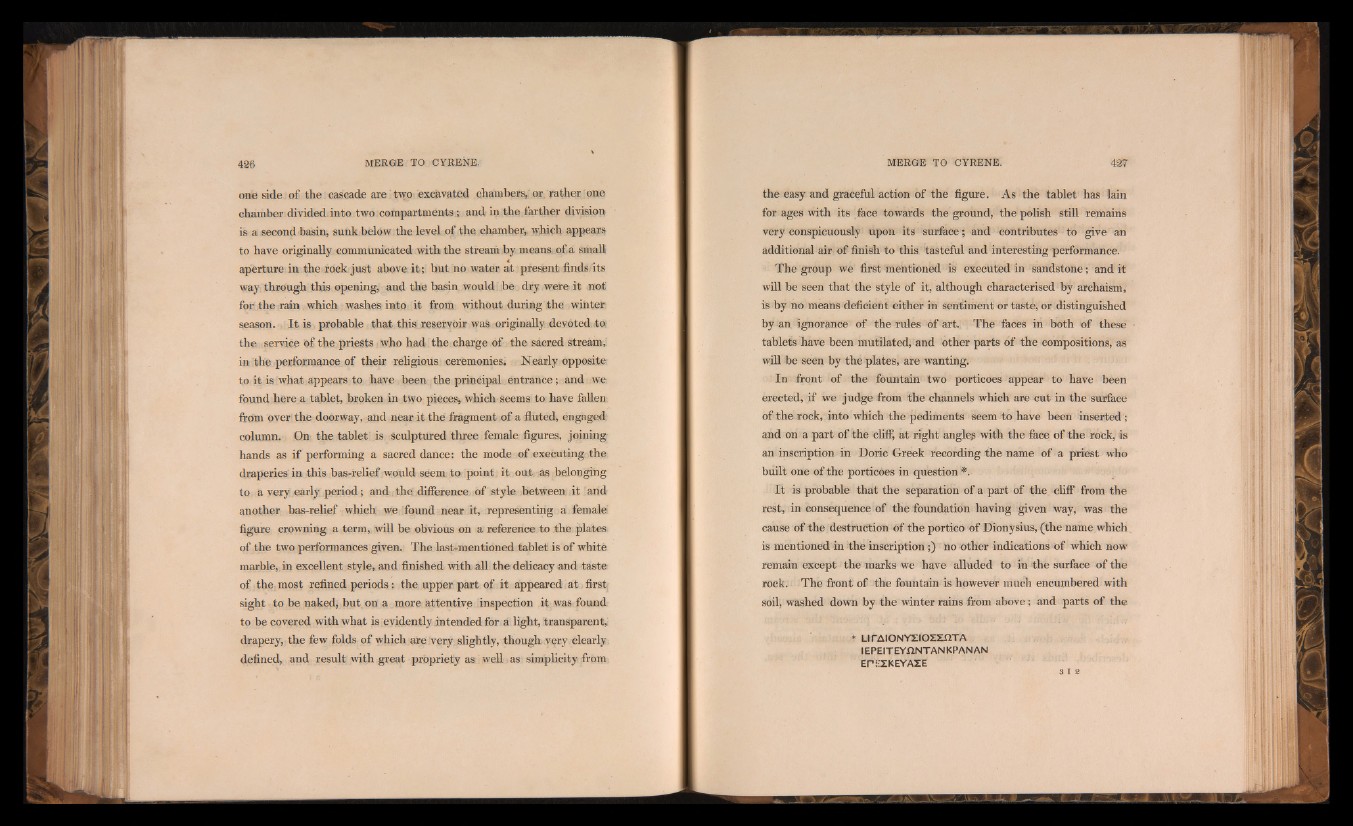
one side, of the; cascade are two excavated chambers»' or, rather one
chamber divided into two compartments» and ip the farther division
is a second basin, sunk below the level of the chamber, which appears
to have originally communicated with the stream by means, of a small
aperture in the rock just above it; but no water at present finds its
way through this opening, and the hasin would be dry were it not
for the rain which washes into it from without during the winter
season. I t is probable that this reservoir was originally devoted to
the service of the priests who had the charge of the sacred stream,
in the performance of their religious ceremonies. Nearly opposite
to it is what appears to have been the principal entrance; and we,
found here a tablet, broken in two pieces, which seems to have fallen
from over the doorway, and near it the fragment of a fluted, engaged
column. On the tablet is sculptured three female figures, joining
hands as if performing a sacred dance: the mode of executing the;
draperies in this bas-relief would seem to point it out as belonging
to a very early; period; and the difference of style between it and
another bas-relief which we found near it, representing a female
figure crowning a term, will be obvious on a reference to the plates
of the two performances given. The last-mentioned tablet is of white
marble,, in excellent style, and finished with all the delicacy and taste
of the most refined periods: the upper part of it appeared at first
sight to be naked, but on a more attentive inspection it was found
to be covered with what is evidently intended for a light, transparent,
drapery, the few folds of which are very slightly, though very clearly:
defined, and result with great propriety as well as simplicity from
the easy and graceful action of the figure. As the tablet has lain
for ages with its face towards the ground, the polish still remains
very conspicuously upon its surface; and contributes to give an
additional air of finish to this tasteful and interesting performance.
The group we first mentioned is executed in sandstone; and it
will be seen that the style of it, although characterised by archaism,
is by no means deficient either in sentiment or taste, or distinguished
by an ignorance of the rules of art. The faces in both of these
tablets have been mutilated, and other parts of the compositions, as
will be seen by the plates, are wanting.
In front of the fountain two porticoes appear to have been
erected, if we judge from the channels which are cut in the surface
of the rock, into which the pediments seem to have been inserted;
and on a part of the cliff, at right angles with the face of the rock, is
an inscription in Doric Greek recording the name of a priest who
built one of the porticoes in question *.
It is probable that the separation of a part of the cliff from the
rest, in consequence of the foundation having given way, was the
cause of the destruction of the portico of Dionysius, (the name which
is mentioned in the inscription;) no other indications of which now
remain except the marks We have alluded to in the surface of the
rock. The front of the fountain is however much encumbered with
soil, washed down by the winter rains from above; and parts of the
| LirAIONYXIOXXATA
IEPEITEYANT AN KPAN AN
EPEXKEYAXE